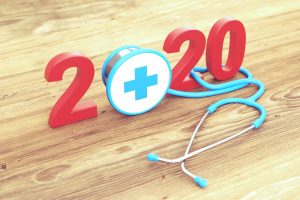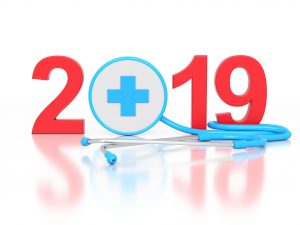Health information networks are an important part of healthcare’s future as the Office of the National Coordinator’s Trusted Exchange Framework and Common Agreement (TEFCA) targets the development of Qualified Health Information Networks to play a central role in data sharing.
What organizations will play this central role in the ONC’s version of events remains to be seen, but two that are well-positioned to take on the challenge are Carequality and CommonWell Health Alliance. Both are already doing the work of these high-powered information exchanges.
Their membership includes the ten largest EHR vendors in the market which serve around 80% of hospitals and 64% of clinicians nationwide, according to the ONC. So when the two health information exchanges launched live health information sharing between them, it meant that a large number of hospitals, clinicians and vendors belonging to either organization could share continuity of care documents across EHR systems.
Among Carequality members alone, 14 million clinical documents were exchanged in the month of August, according to statements from officials within the organization. Now with bi-directional data sharing occurring with CommonWell, interoperability seems to be closer to becoming a reality than ever before.
It’s something that president and CEO of the Massachusetts eHealth Collaborative, Micky Tripathi, Ph.D., called interoperability’s “Golden Spike moment” in an interview with Healthcare Informatics.
“Like when AT&T and Verizon finally got connected. This is building that bridge,” Tripathi said. “It will take a while for all of the production sites and different vendors to get up and running. That will probably take a couple of years. But you have to have the bridge to connect them to begin.”
The connection between the two is important because it creates a low cost, consistent method for transferring basic clinical information among providers for treatment purposes and it’s happening between two vendors who represent a large swath of the American healthcare landscape.
Where is all this going? Well, as is often the case in technology-related fields, the goal posts keep getting moved as expectations rise. A few years ago, simply exchanging information was a tremendous feat, but today, we have greater expectations about what kind of data we receive and what we and our machines can do with it. But for that to become a greater area of focus, everyone first has to be on the same page, speaking the same language.
Can FHIR Implementation Provide Greater Depth of Data?
Both Carequality and Commonwell are using Fast Healthcare Interoperability Resources (FHIR) for a data standard. According to ONC data, an ever-increasing number of hospitals and clinicians have adopted systems that use FHIR, thus creating a common data language where there was no clear consensus before.
Courtesy of the Office of the National Coordinator
This is a recent development as healthcare providers, EHR vendors and administrators seek to reduce the drastic variation in the methods of collection, coding and processing of health information. The number of formats in which data has been created and stored is far too complex, complete with their own rules, for interoperability to be a reality.
Establishing FHIR as a primary language and implementing the Common Clinical Data Set, now known as the U.S. Core Data for Interoperability (USCDI), which can be communicated in FHIR format, has the potential to help create uniform terminology, format and substance to patient data across all areas within the spectrum of care.
But how deep is the level of insight that can be gleaned from this data? Data can be exchanged as of now, but what else can the computer system do with it is the question. As of right now, due to differing technical capabilities and structures, not much.
Critics argue that FHIR, which also has multiple versions, will not be sufficient to facilitate semantic interoperability due to varying formats and uses. In other words, the ability of computer systems to communicate accurately and reliably, and thus facilitate those systems interpreting and analyzing the meaning of that data, is still a ways off.
As a result, its ability to support large scale analytics and population health efforts may also be further into the future than is often hyped.
Current efforts to address this include The Argonaut Project’s effort to include clinical notes and unstructured patient questionnaire data in FHIR based interoperability. With the majority of EHR vendors participating in interoperability efforts of some sort and preparing their systems for sharing of the USCDI through FHIR, the industry is reaching a point where standards are becoming more uniform, interoperability more common and data readily available.
But what that data will show and how it plugs into the technology of tomorrow falls under the category to be determined.




